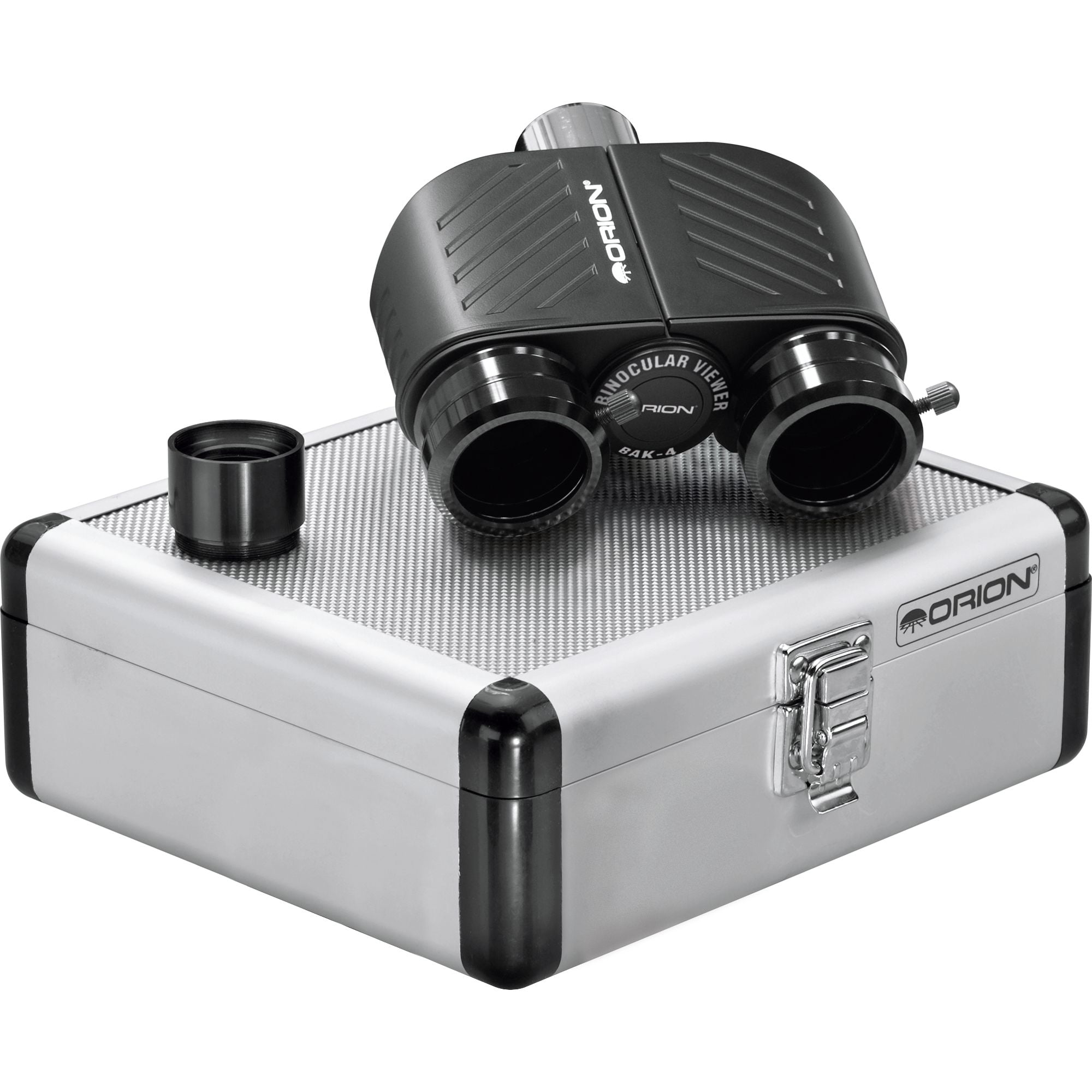
The clusters, nebulae, and galaxies of Charles Messier’s deep-sky catalog are all in range of binoculars, as are wider double-star systems such as Albireo in Cygnus and Alcor and Mizar in Ursa Major. The ice giant worlds of Uranus and Neptune are within range of binoculars. Saturn’s rings are barely apparent with large binoculars, but its large moon Titan leaps into view in midsized binoculars.

Jupiter displays its Galilean moons changing position from night to night. Often, when a planetwide dust storm is under way, this color will change to a sickly yellow. Mars shows off a pumpkin-colored disk near opposition. Like the Moon and Mercury, Venus also easily shows phases when viewed through binoculars. Sweeping the horizon with binoculars can make this feat of visual athletics possible. Many naked-eye observers haven’t seen Mercury, which always hugs the horizon near dawn or dusk. Mercury is a dazzling dot and shows Moon-like phases when viewed with binoculars. It’s fun to watch the Moon go through its phases from one night to the next, as the shadow angle and illumination change over craters, flat maria, and mountains.Ī safe solar filter designed to fit snugly over the front aperture of binoculars will allow you to view sunspots on the dazzling photosphere surface of the Sun.

The Moon is everyone’s first target of choice with binoculars. Cons: Binoculars are tough to share and not designed for astrophotography.Pros: Binoculars are lightweight, easy to deploy, and intuitive to use.The points above can be summarized as follows: I’ve also seen some amazing, oversized, tripod-mounted binoculars in military surplus stores. Quality binoculars are common in pursuits such as hunting, birding, and hiking and are easy to track down in sporting goods stores. In 2020, a good pair of binoculars can be had for US$50, though a high-end pair can cost the price of a good used car. Galileo’s first telescope had a measly aperture of 26 millimeters and magnified just 8 times. I wouldn’t go smaller than 7×35s for astronomy. Of course, bigger is better, though you start to get into tripod-mounted territory when you hit over 70 millimeters in aperture. If you’re looking at 7×50s, you’re looking at good, versatile binoculars. A bigger aperture also means a better resolution. The bigger the aperture is, the more light-gathering ability the binoculars have, making for brighter, crisper views. What does “10×50” mean? Every set of binoculars is defined by two numbers: The first is the magnification (in this case, 10 times), and the second is the aperture diameter (in this case, 50 millimeters).

Large tripod-mounted binoculars like these are an amazing military surplus find. After that, you’re ready to observe.īecause of these necessary adjustments, one key drawback with binoculars is that they’re tough to hand off from one observer to the next, as they have to be readjusted every time. Focus the fixed eyepiece, then adjust the other so it’s also in focus. For this, binoculars have one fixed eyepiece and one that adjusts. The next adjustment compensates for the vision difference between our eyes. This adjustment stems from the fact that the distance between the eyes is slightly different from one person to the next. All binoculars have two easy adjustments you need to make for observing: The first is changing the diopter spacing, or the distance between the two eyepieces. Learning “Binocular Speak”įirst, you’ll need to know something about how binoculars work.
BINOCULAR FOR STARGAZING HOW TO
In fact, I’d go so far as to say you should take an interest in astronomy in stages: First, learn the naked-eye sky, the patterns of the constellations, and how to find the planets then explore the brighter deep-sky objects with binoculars, and only then get a telescope.


 0 kommentar(er)
0 kommentar(er)
